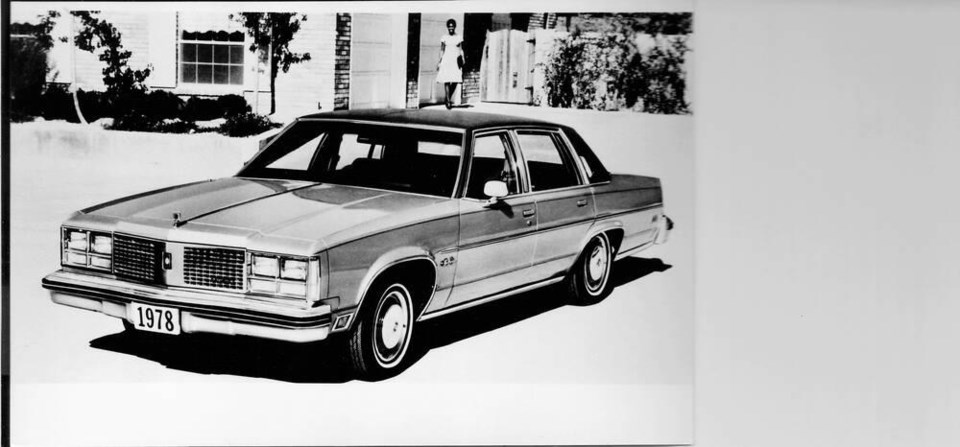Although diesel engines are more efficient and economical than gasoline engines, the clatter, smell and smoke of earlier models found little favour with North American motorists. That changed in the 1970s when two energy crises threatened gasoline supplies. Even then, diesel car popularity was temporary.
In Europe where fuel is more expensive, motorists enthusiastically embraced oil sipping diesels. Daimler-Benz introduced the world’s first production diesel car. the Mercedes-Benz 260D, in 1936. Although intended for taxi use the 260D’s economy and durability appealed to ordinary motorists and M-B soon became a strong diesel car advocate.
The diesel engine was the brainchild of Rudolf Diesel, a brilliant German engineer born in 1858. He was determined to produce a more efficient powerplant than the then dominant steam engine and he received a patent for his “rational heat engine” in 1892.
While the steamer was an external combustion engine that burned its fuel outside the engine, the diesel, like the fledgling gasoline engine, burned it inside the cylinders. But unlike a gasoline engine in which a spark plug ignited its fuel, diesel combustion occurred by injecting the fuel into the cylinder where it was ignited by the heat of a very high compression ratio, making the diesel a compression-ignition engine.
Although a despondent Diesel committed suicide in 1913 by jumping overboard into the English Channel, others carried on his work and the diesel gradually evolved into the most efficient stationary engine available.
In the 1920s experiments were conducted with diesel cars, and in the 1930s diesels appeared in large mobile applications like locomotives and line-haul trucks.
While Europe eagerly embraced diesel cars, cheap gasoline kept them off the North American scene. There were some early disciples, however. In 1930 Clessie Cummins, a diesel engine manufacturer in Columbus, Indiana, installed one in a 1925 Packard, the first such U.S. application. Cummins demonstrated its economy by driving from Columbus to the New York Auto Show on $1.38 worth of fuel oil!
Auburn Automobile Co., of Auburn, Indiana, considered offering a Cummins diesel option in 1935 but the company’s demise ended the plan. It would be more than 40 years before an American manufacturer would offer the first diesel powered car.
The impetus for an American diesel was the energy crisis of 1973-74 that resulted in Corporate Average Fuel Economy (CAFE) legislation requiring auto manufacturers to achieve a sales weighted fleet average of 18 mpg (U.S.) in 1978 models, rising to 27.5 in 1985.
General Motors saw diesel as a major contributor to meeting CAFE and in 1978 Oldsmobile offered the first American diesel powered car. Other large GM cars got it in 1979.
To create its diesel Oldsmobile used its 5.7 litre (350 cu in.) gasoline V-8. Since a diesel’s internal pressures are much higher – compression ratio was then typically twice as high - the V-8’s components like bearings, pistons, connecting rods, crankshaft and cylinder block had to be strengthened, making diesels more expensive to build.
Cylinder heads were fitted with glow plugs to aid starting. A pre-chamber initiated combustion with a richer fuel-air mixture, which then ignited a leaner charge in the main combustion chamber.
Unfortunately when the engine reached the public problems surfaced. Head gaskets blew, oil leaked and there were crankshaft and piston failures. The gasoline- to-diesel conversion was not been wholly successful, and in the early 1980s Consumer Reports magazine consistently advised readers to avoid GM diesels.
GM gradually brought its diesel to a higher level of reliability. When running perfectly Car and Driver (12/77) called it, “…the only way to haul six people 600 non-stop miles in shameless comfort on sixteen bucks’ worth of fuel.”
But although it was economical, performance was modest. CD reported its 120 horsepower took 14.9 seconds to haul the 1,887 kg (4,161 lb) Delta 88 sedan to 97 km/h (60 mph). Top speed was only 150 km/h (93 mph).
In mid-1981 General Motors introduced a 1.8 litre Isuzu four cylinder diesel in its sub-compact Chevrolet Chevette/Pontiac Acadian. For 1982 Oldsmobile built a 4.3 litre V-6 diesel, a three-quarter version of the 5.7 V-8. Ford offered a diesel in its small Ford Escort/Mercury Lynx.
In addition to the American nameplates, diesels were offered by Audi, Mercedes-Benz, Peugeot, Volkswagen and Volvo.
By the mid-1980s fuel concerns were gone and diesel cars faded in North America. Only Mercedes-Benz and Volkswagen carried on, and M-B’s diesel was temporarily discontinued here in 1999.
Then came a shocker in 2015 when Volkswagen was found guilty of diesel emission cheating. It killed VW’s diesels sales and significantly reduced Canadian diesel interest, although some were still offered.
In addition to the emissions concerns, engineers continue to make gasoline engines more efficient, thanks mainly to the extensive use of turbocharging that wrings more power from smaller engines.



